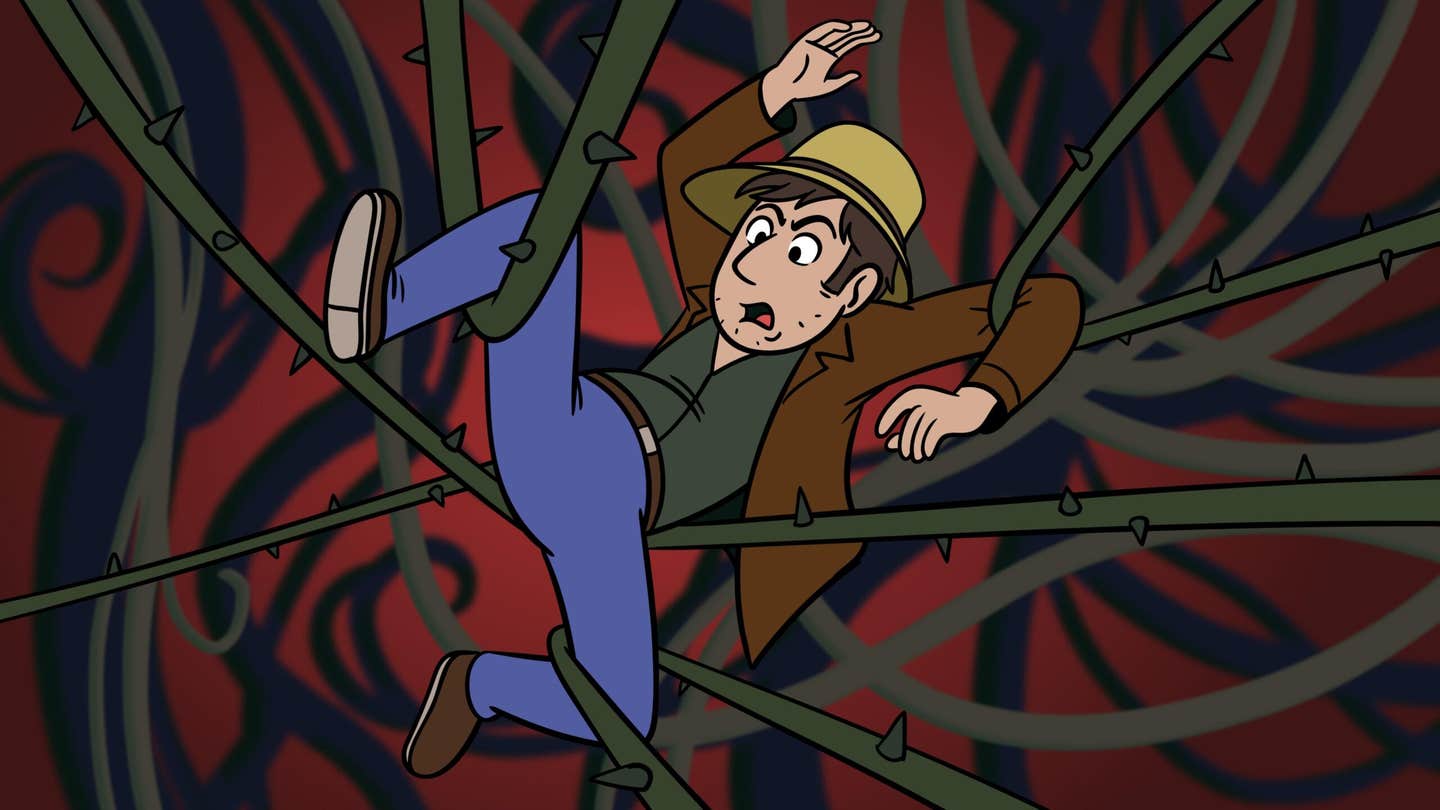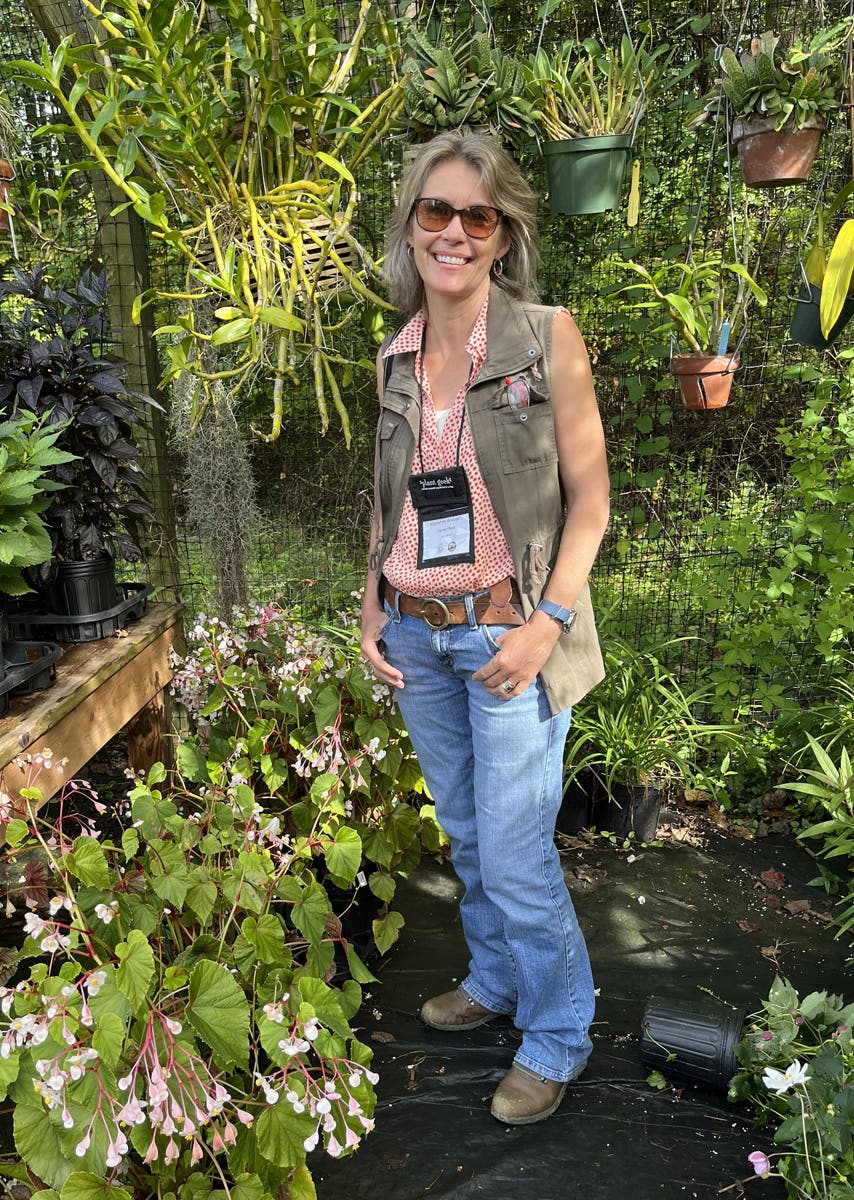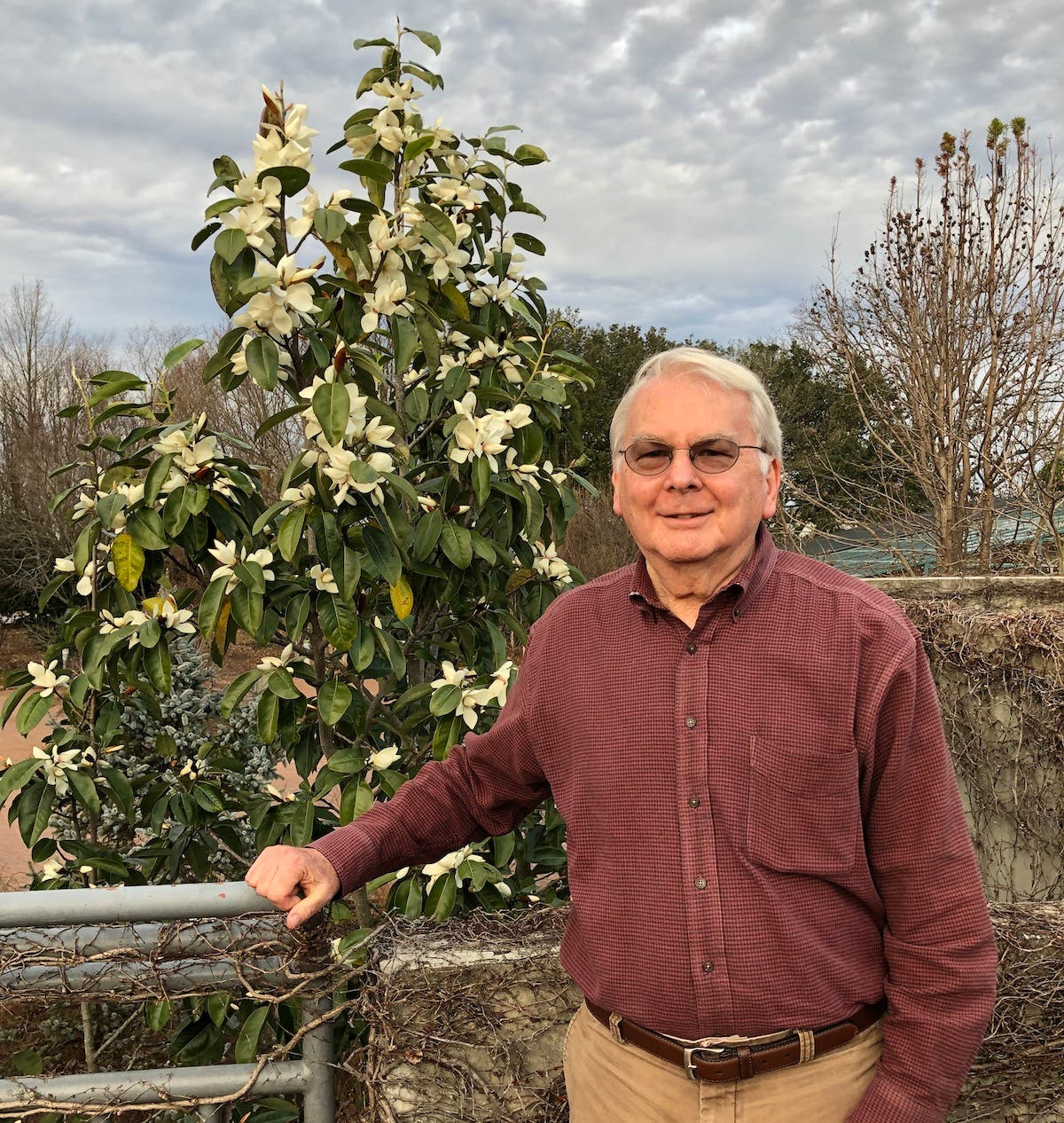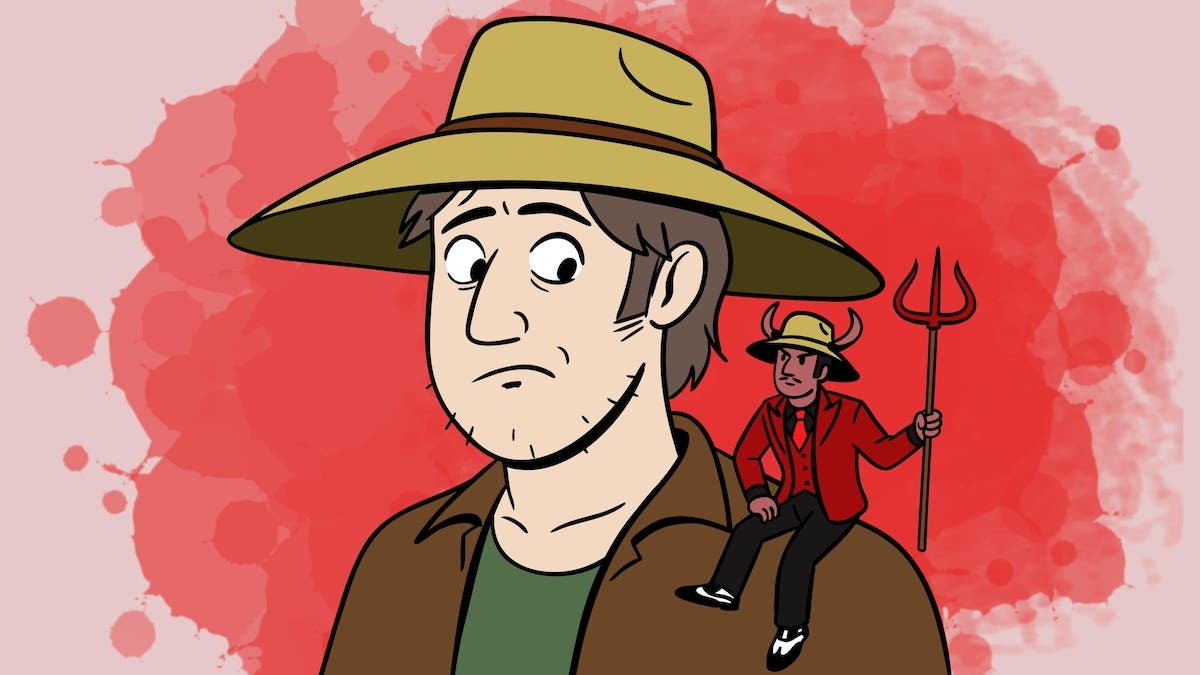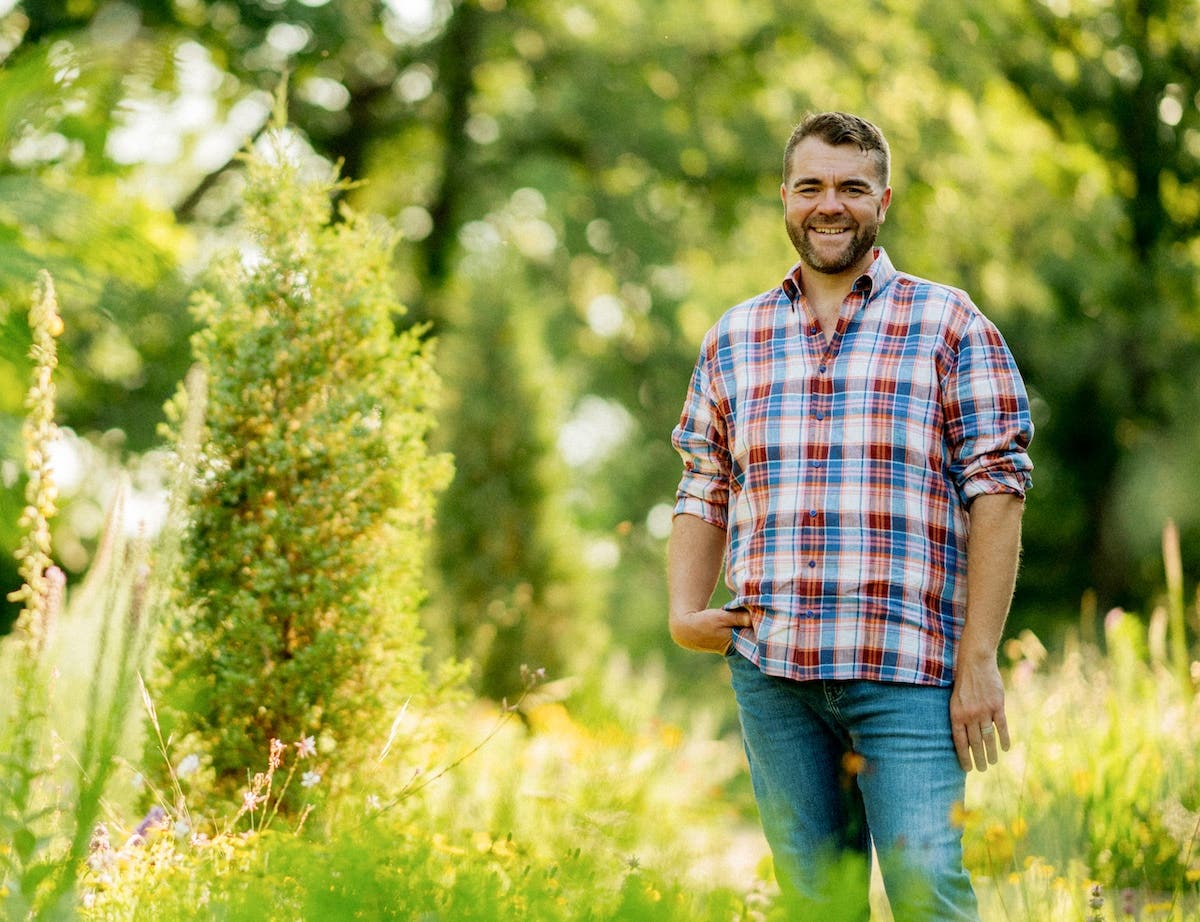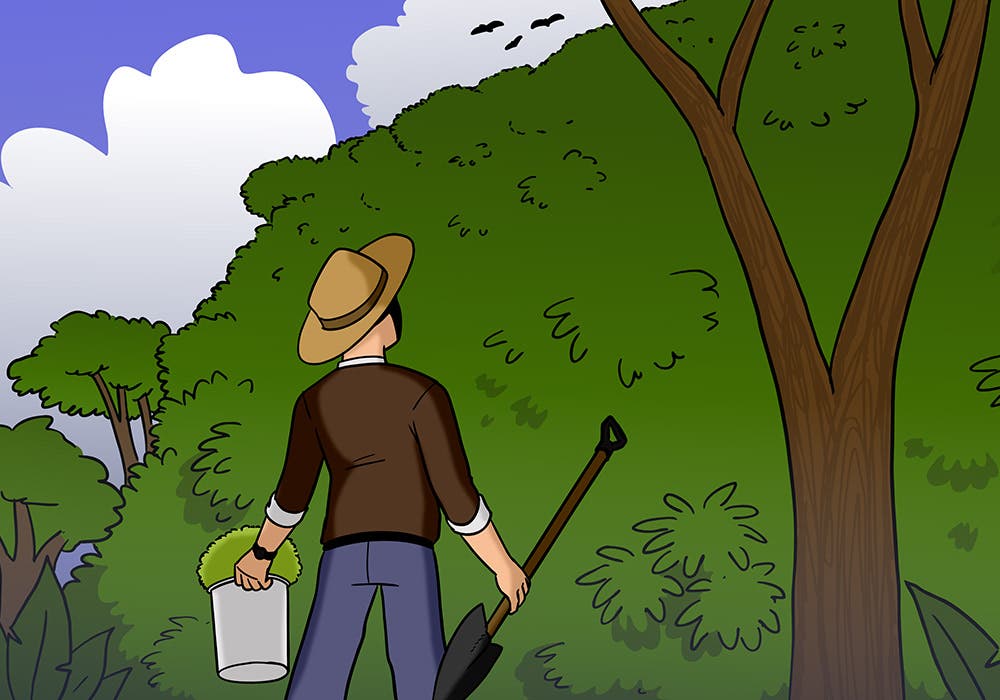Horticulture Education Today: A Conversation with Professor Jared Barnes
Jared Barnes, a leading professor of horticulture, discusses opportunities in garden education and his observations on the future of the field
Jared Barnes is an award-winning professor of horticulture at Stephen F. Austin State University in Nacogdoches, Texas. He also hosts "The Plantastic Podcast" and publishes a weekly e-newsletter called plant•ed, both of which can be found at his website, Meristem Horticulture. At home, he gardens with wife Karen and daughter Magnolia.
Scott Beuerlein: You’re known as a young, dynamic instructor and also a great speaker. I remember seeing you at a PPA meeting in Chicago with some students, and I was so impressed with the great bond you seemed to have with them.
Jared Barnes: I’ve had so many people that have invested in me and in my life and in my learning. Why wouldn’t I give back? What inspires me so much is just to see the thirst and hunger and students’ willingness to engage in a class and learn about plants.
Besides teaching, I oversee an acre-and-a-half student botanic garden called the Plantery, where we have a living lab on campus for students to learn to grow plants in greenhouses and outdoors. The talent and passion these students have is just incredible. And that’s partly the environment we try to create.
I’m not here to lord over other people. It’s definitely having a servant’s heart and trying to think about how can we be a team, how can we work together to get certain goals accomplished? And how can we share a love of plants with as many people in our community as possible?
My students have great ideas. Not just horticulture students. I have had students majoring in hospitality, art, forestry, animal science, and others of different majors and backgrounds work or take classes with me. The ideas and stuff that they come up with about how we can do things better or differently—I find this very inspirational, too.
SB: Do your students have a realistic idea of what hort school is and what their career might be?
JB: I ask new students, “What are you interested in?” And they just say, “Plants.” I think that they don’t totally understand all the options available to them to in the horticulture industry. That’s why going to conferences like PPA and trade shows is so helpful, because they come back and they say, “Well I didn’t know that tree spades were even a thing!” Or flame weeders. That’s why I love to share as much as I can with students in class, because you never know what’s going to resonate with them. I remember one dynamite student, Grace, making the comment, “I never expected when I came to college that I would learn how to drive a tractor!”
SB: Do you see a common denominator with the students’ main interest?
JB: I would say the succulents and houseplants trend is still going strong with them. People want to green their environments that they live in, to have plants in the rooms, to have plants on windowsills. We have a vibrant horticulture club here that I advise and students are passionate about propagation. They’re amazed whenever they find out that you can break off a leaf and stick it and make a new plant from that. And they’re passionate about carnivorous plants. Those still fascinate people. And there is a focus on plants and sustainability.
SB: How is your program doing in terms of numbers of students?
JB: We’re part of an agriculture department; we’ve never had a separate horticulture department. Our program has actually seen sustained growth since I’ve gotten here. We now have over 400 agriculture students that come through the program.
When I first got here, our horticulture numbers were around 19. And now they’re up in the mid-to-high 30s. So, we still have the students that are interested in coming. And one of the things that helped us attract students is the Plantery.
I was at a conference years ago at the American Society of Horticultural Science, and a researcher inventoried of the plants around their horticulture building, and it was hollies, liriope, all this traditional stuff that we use in gardening. And they made the comment that too often our horticulture buildings don’t reflect the creativity we teach. They’re just bland plantings. Like JC Raulston said, whatever part of the country you’re in, the common landscape has 40 plants that are overused. And so we’ve overhauled the landscape here around the agriculture building.
We installed a 6,000-square-foot edible garden where we grow food, and we have had students enroll in our program just because that garden was there.
And my Plantery student team installed a 7,000-square-foot native terrace trial garden using Corten steel with the help of some colleagues. We didn’t do outside contracting for it. It was built by students for students.
Having these real-world projects that students can be part of is just so incredible. When prospective students come to visit, you can see their eyes get big with the possibilities we have here. I’m a pull marketer more than I’m a push marketer. I use the “Field of Dreams” approach. You know, if you build it, they will come.
I teach a core introductory horticulture science class called Cultivating Plants. We named it Cultivating Plants because some students don’t know what the word “horticulture” is. When I first started teaching the class, it was just 50 ag majors. And now we welcome 140 students from all across campus. On the first day, I ask who has never heard the word “horticulture” before and inevitably a few hands go up. So that’s part of the reason why we branded it Cultivating Plants. And so our program is doing well.
I think that one of the reasons why some horticulture programs went through some decline is that in the ’80s and ’90s things were going great for horticulture. Gardening was on the front cover of Time in June 1988. I would go to the Cultivate trade show and people would say, “We had double-digit growth.” From what I’ve heard from others, because I was just a kid in that time period, maybe because things were great the industry didn’t need to recruit. Until the past ten years or so, there hasn’t been this effort to really get out there and say horticulture is something you can do as a career and be successful and happy! And so maybe we lost a generation there. Plants can’t talk and share their wonder or their stories. That’s on us to do, to share them with people.
And maybe the other thing too is that with traditional landscapes of meatballs, people kind of found them boring, which perpetuated plant blindness. They weren’t engaging enough.
But what’s interesting is, you do see the passion for plants with young people. You do see their interest. Social media does help out with that—people see videos on TikTok or Instagram about how you can propagate this plant, or some really cool thing about a tree species. And so the curiosity is there. We just need to communicate that you can have careers in horticulture. And one of the things that’s really helping to do that, of course, is Seed Your Future, which is a national program started by the American Society of Horticultural Science and Longwood Gardens and sponsored by many different companies.
Their research shows that once students hit third grade, the amount of horticulture and plant knowledge that they’re exposed to drops off precipitously. And so they’re asking good questions to address how we get more horticulture plant exposure to youth.
So even if programs have been struggling in recent years, I’m optimistic and I see a future for plants in society. How do we make urban cities greener? How do we grow more food? How do we plant more sustainably? These are serious questions that horticulture will help address in the future.
SB: I’m curious if you’ve had a lot of second-career people coming through your program.
JB: Yes, we do. I’ve had parents and grandparents or people burned out of their current job come back and get horticulture degrees. Whenever I go out and give talks at conferences, people will come up hungry for plant knowledge, and they’ll say, “Oh, I so wish I’d done this in college. I wish I’d taken some plant classes and really gone down this avenue.” And I don’t know why they didn’t. Too often people end up living what society wants them to be, and so maybe they thought they couldn’t be successful in horticulture at the time or were pressured against it. I’m happy to see them come back and pursue their plant interests. I’m living proof that you can follow your passion and dreams with growing plants and be successful.
It doesn’t matter if they are fresh out of high school or second career. Students to have to put in the time and the effort. They have to get dirty and sweaty and hot and cold, but, you know, I would so much rather do this than sit in an office with no windows. And many of them feel the same way.
SB: Horticulture has traditionally been a male-dominated industry, which is, of course, ironic, because the majority of the end consumers have traditionally been women.
JB: What excites me is to see more diversity coming into horticulture. I’m seeing more female students coming through our program and they are some of our best students. They’re passionate and driven and enthusiastic.
SB: All over the world, every nationality, every race, has exposure with growing plants. Yet we don’t see much diversity in professional horticulture.
JB: So a couple of things come to mind. One is that I think it’s on us, the horticulture industry, that we have not done enough to get the word out that you can have good careers in horticulture. We should be going to low-income areas and starting gardens and having conversations with the people to grow what they grow. We also have to realize that not every culture views plants the same way that we do. So we might think about how do we fit diverse cultures into our community gardens, botanic gardens, educational systems, et cetera? So if you have a predominant minority in your area, maybe you create a garden specifically oriented toward them. Some botanic gardens have had incredible success with that kind of outreach.
The other thing to keep in mind is that sometimes gardening is connected to income levels. For some, gardening is a hobby, and in today’s world some families are working two, three jobs, and they don’t have time to debate whether we should be planting petunias versus phlox. For them, it’s about survival, about having a pot on their porch of something they can eat, so they can feel a bit more in control of their life.
That’s where the onus falls on us. We need to do a better job being out there, being disciples for horticulture and teaching people about how they can be growing and enjoying plants, while we’re being open to learning about the plants and practices of different cultures.
SB: We have a good example of that in Cincinnati. A small group of people immigrated here from Bhutan and they have a community garden where they’re growing traditional vegetables that they’d otherwise be unable to find.
JB: A couple years ago, we had a student that came through our program who was from the Caribbean. We were growing roselle (Hibiscus sabdariffa), and she saw the plant and said, “You’re growing roselle!” Turns out, this reminded her of her childhood back home. They used to cook it down and eat it with fish, and I thought that connection was so cool.
Piper auritum, or root beer plant, is used in Central American cuisines. I remember one of my colleagues telling me that she showed the plant to kids on a tour, and they went wild over it because they recognized it from their home gardens.
We don’t need to be like, hey, here’s Quercus or Ilex. Let’s find plants that engage with the stories of a person’s life and go deeper.
I feel like we need to share the wonder of plants. I have said for many years we are great at propagating plants but not gardeners. Too often with gardening we get bogged down in facts. But research shows that wonder and awe is what gets people invested in learning more. And pretty much every horticulturist, we’ve imbibed that wonder and had that passion germinate within us. But at the same time, my wonder and awe might not be the same as yours. Or someone else’s. So, my approach is to share all that I can and share often.
Images courtesy of Jared Barnes


